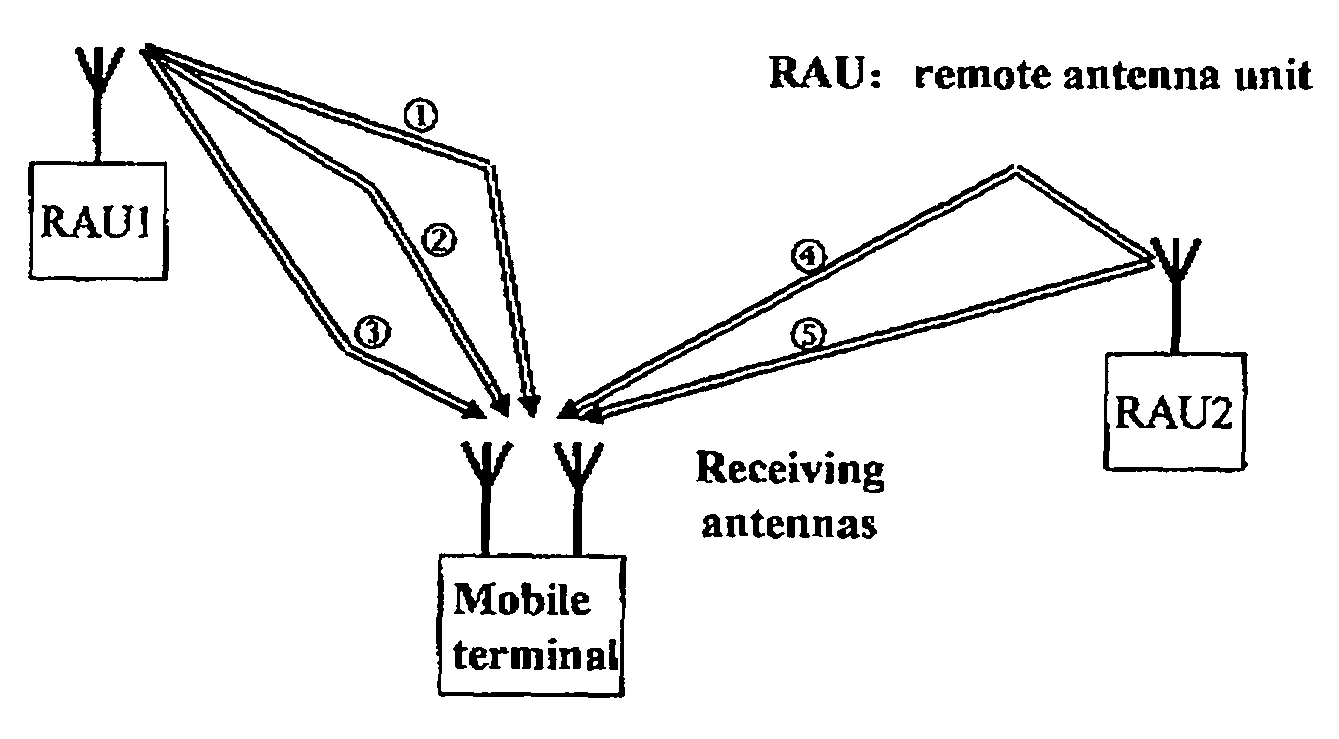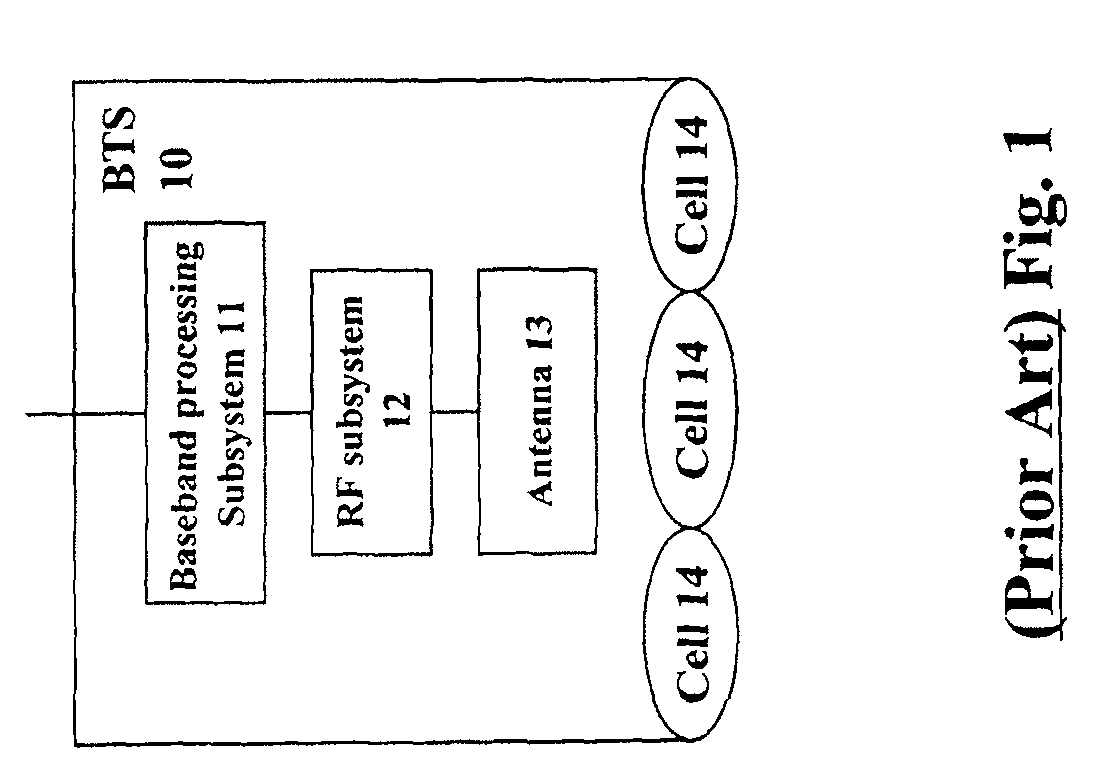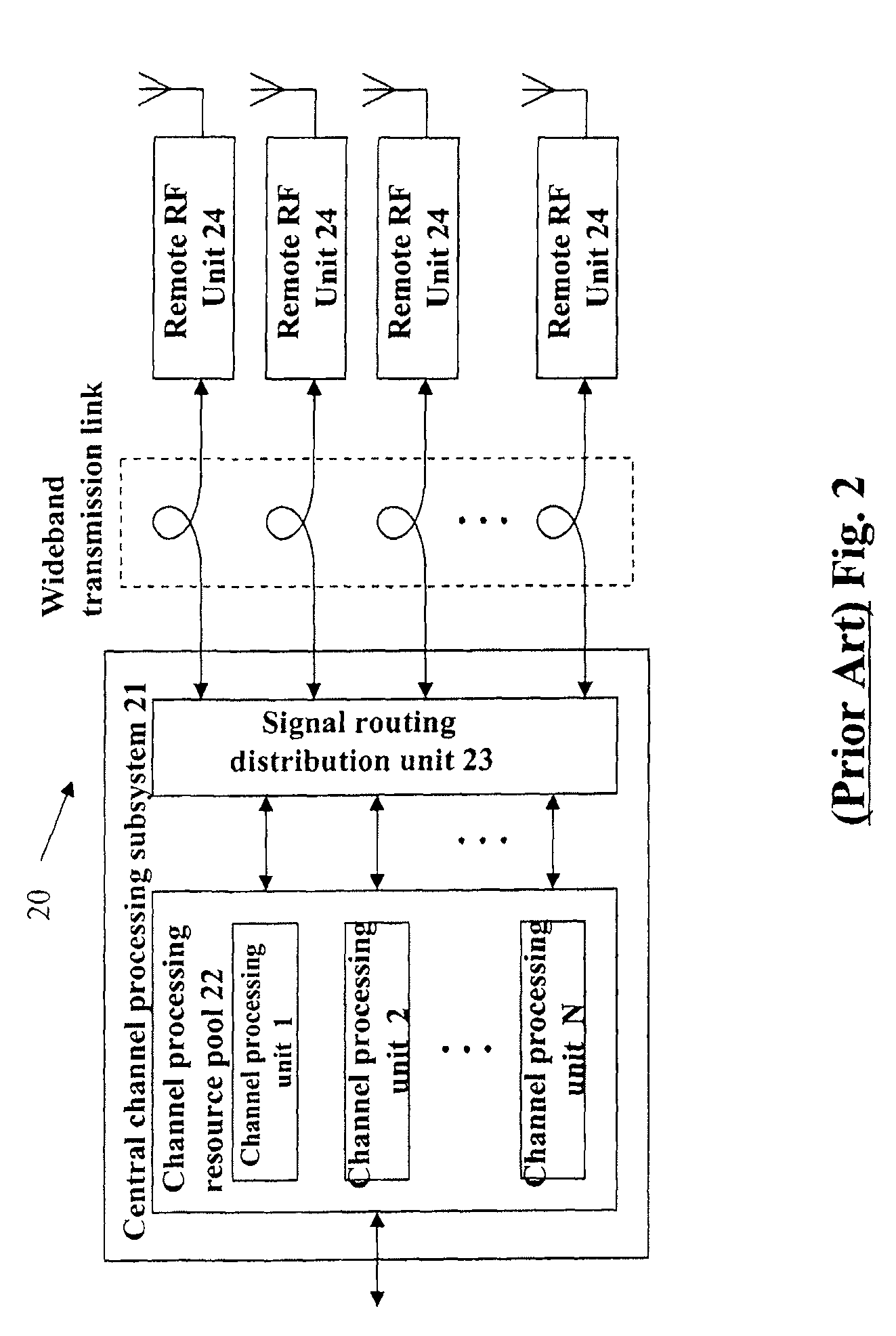Multiple input/multiple output communication method based on distributed transmission sources
a communication method and distributed transmission technology, applied in the field of wireless signal communication methods, can solve the problems of multipath interference, frequent handoff, and inability to use existing mimo techniques in complex cells, and achieve the effect of high-speed downlink packet access
- Summary
- Abstract
- Description
- Claims
- Application Information
AI Technical Summary
Benefits of technology
Problems solved by technology
Method used
Image
Examples
Embodiment Construction
[0043]As stated above, when using MIMO technique in a complex cell, its channels have respective features.
[0044]1. Channel Characteristic of MIMO System Based on Distributed Transmitting Antennas
[0045]FIG. 6 schematically illustrate a 2×2 MIMO system using distributed transmitting antennas according to the present invention. As shown in the figure, there are 3 multipaths labeled as #1, #2, #3 from remote antenna unit RAU1 to the mobile terminal, and there are 2 multipaths labeled as #4, #5 from remote antenna unit to the mobile terminal. In similar to a conventional MIMO system, in any multipath between the RAU1 and the mobile terminal, the channels from the RAU1 to two receiving antennas have the same multipath delay. In any multipath between the RAU2 and the mobile terminal, the channels from the RAU2 to two receiving antennas have the same multipath delay. The channel fading of multipaths from the RAU1 and the RAU2 to two antennas of the mobile terminal is mutually independent. F...
PUM
 Login to View More
Login to View More Abstract
Description
Claims
Application Information
 Login to View More
Login to View More - R&D
- Intellectual Property
- Life Sciences
- Materials
- Tech Scout
- Unparalleled Data Quality
- Higher Quality Content
- 60% Fewer Hallucinations
Browse by: Latest US Patents, China's latest patents, Technical Efficacy Thesaurus, Application Domain, Technology Topic, Popular Technical Reports.
© 2025 PatSnap. All rights reserved.Legal|Privacy policy|Modern Slavery Act Transparency Statement|Sitemap|About US| Contact US: help@patsnap.com



